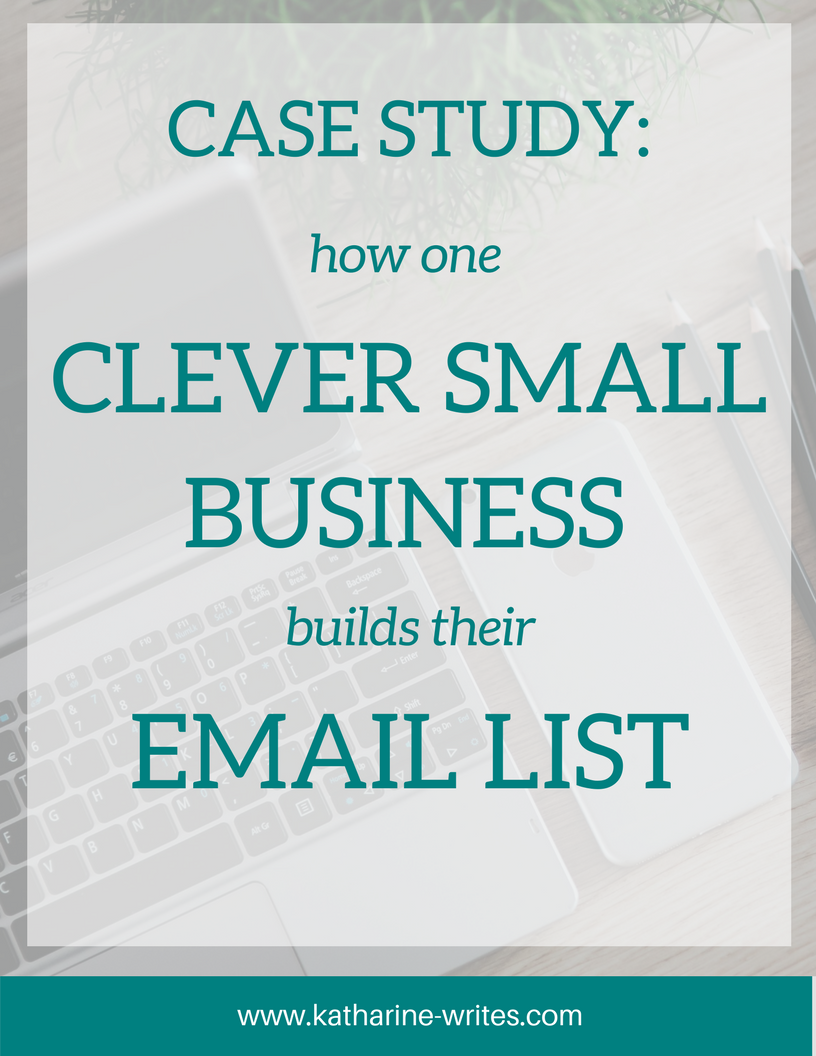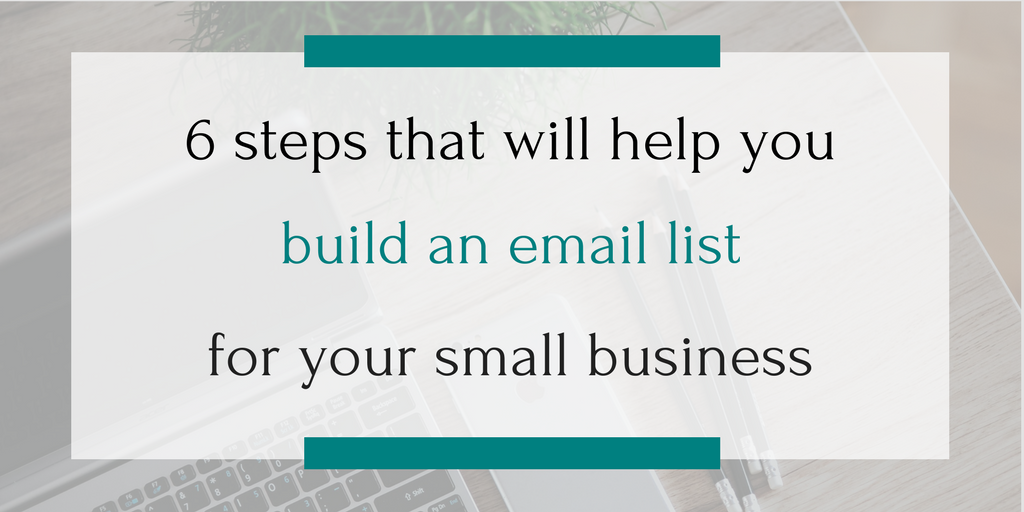
When visiting my in-laws recently, I took an afternoon to get some work done at a local coffee shop.
This is pretty standard in the world of professional writing. I expected to find a set-up like any other: I buy my coffee, tip a dollar for every hour I plan to be there, ask for the WiFi password, and settle in to work.
(If I can find a gluten free pastry to munch on, that’s just the icing on the cake.)
But this particular coffee shop did something that no other coffee shop I’ve been to has done. They managed to sell me my coffee, give me free WiFi, and collect my email address… in a way that surprised and impressed me, someone who regularly encourages small businesses to collect emails from customers.
Want to know what it was?
The Smart Way One Small Business Builds Their Email List
They didn’t ask for my email at the register. They didn’t try to get me to sign up for any promotions. Nope, the tactic they used was simple and beautiful.
When I logged into their open WiFi network, after accepting their terms of service, I had to enter my email to proceed to internet access.
It took less than ten seconds, and I suspect most users wouldn’t have thought twice about it.
Not only that, but five minutes later, a thank you email email showed up in my inbox with a pretty picture, a company logo, and a welcome message saying how glad the team was that I came in.
An hour later, I got a second email, this one with a coupon for 10% off my purchase the next time I visited.
The next day, when I needed to squeeze in a couple more hours of work, guess where I went? Right back to that same coffee shop, discount code in hand.
Now, that doesn’t sound revolutionary. In fact, it’s not. But this clever coffee shop did six things exactly right.

1. They integrated the sign-up into something a customer wants.
As any small business knows, getting your customers to welcome you into their email inbox is a tricky, tricky task.
Our inboxes are already overflowing with junk, spam, and sales pitches we aren’t interested in. Convincing your customer that your business won’t send them any of those things can be incredibly difficult.
Offering a sign-up incentive is always a great tactic. But integrating email collection directly into the process of using your service can be an even better choice, especially if you have a business that customers don’t associate with email communication (like a coffee shop).
Offering free WiFi that customers can sign into using their email is a great idea for pretty much any business out there, because people hate using up data for their smartphones and tablets. You could also:
- offer to send receipts via email instead of printing them
- give the option to create an account on your site for faster checkout or exclusive access
- let customers sign up for email notifications when out of stock items are available again
By integrating email collection into a service or process that customers are already using, you make it easier on both the customer and yourself.
2. They made signing up feel non-intrusive.
Let’s face it, no one likes giving out their personal information to random businesses. Even if you and I know that you have no nefarious purpose in mind, most people still feel like their privacy (and when it comes to crowded inboxes, sanity) are at stake.
Heck, I feel like this half the time myself, and I know way more about list building and email marketing that the average guy on the street!
Luckily, customers are more likely to give you their email address when they aren’t thinking about giving you their email address.
This means that your sign-up point needs to feel non-invasive, as if it’s just part of the normal process of doing business, using a service, shopping online, or checking out in store.
When customers don’t feel put on the spot or pressured to hand over their contact information, there’s a good chance they’ll share it without a second thought.
3. They reached out with a thank you.
Here’s a big, important thing about collecting emails from customers: the first thing they see from you should not be a sales pitch.
Excuse me while I emphatically repeat that.
Your first appearance in a customer’s inbox should NOT be a sales pitch.
The first thing they hear from you should be a thank you. Because, face it, they’ve done you a favor. They’ve invited you into their lives. They’ve given you a way to get in touch. They’ve opened up the door to building a relationship and, yes, eventually selling to them.
When that happens, your job is to do the polite, mannerly, friendly thing and say thank you.
4. They gave me a compelling reason to come back.
And by compelling I mean: that reason benefited me in a way that I couldn’t get anywhere else.
As a customer, I could go to any number of coffee shops that would provide me the same basic service: good coffee in a cup, a table to sit and work, an outlet for my computer, and available internet access. If you’re anything like me, you can probably think of five different places within ten miles that match that description perfectly.
But in this instance, only one of those five locations came with the added bonus of 10% off my order. That offer distinctly benefits me and creates an immediate reason to head to that coffee shop a second time.
5. They created an opportunity to build loyalty.
Guess what? Now that I’ve gone to that coffee shop twice, I’m much more likely to head back a third or fourth time. I’m much more likely to pick that specific coffee shop whenever I’m at my in-laws’ and need somewhere to grab a latte or a tea, whether I’m working or not.
That’s because people like their decisions to be easy. If you have to choose between five coffee shops you’ve never visited, or even five coffee shops you’ve only visited once, all the choices feel pretty equal. It takes effort to pick one. And guess what? People don’t like making effort.
But when faced with the choice between four coffee shops you’ve never visited and one coffee shop you’ve visited twice? Unless you had an absolutely terrible experience, you’re going to go to that same coffee shop again. And again. And again.
When you turn a one-time visitor into a repeat customer, you exponentially increase the likelihood that they become a loyal customer.
And loyalty is the backbone of a successful small business.
6. They automated the process.
This sort of system does not work — I repeat, does. not. work. — if it is not on autopilot.
If you have to send out individual emails every time someone signs up for your list… well, let’s be honest, you’re not going to. No one is. No one who is running a business has that kind of time.
That’s why an autoresponder sequence, sometimes known as a drip sequence or sales funnel, is essential. These are emails you pre-write and pre-schedule through your email management software, setting them to send out at specific intervals after someone signs up for your list.
Automating the emailing process is one of those tasks that often gets shoved to the bottom of the to-do list. But without automation, all you have is an unused list. An autoresponder sequence is an essential step that turns those emails into interested customers who are building a relationship with your business.
And that’s the whole goal, right?
*****
neat idea! it looks like working thanks